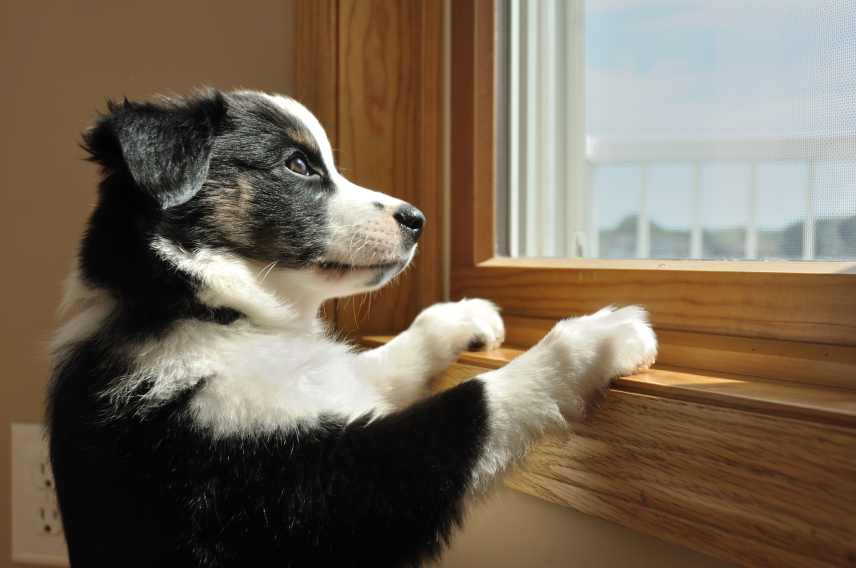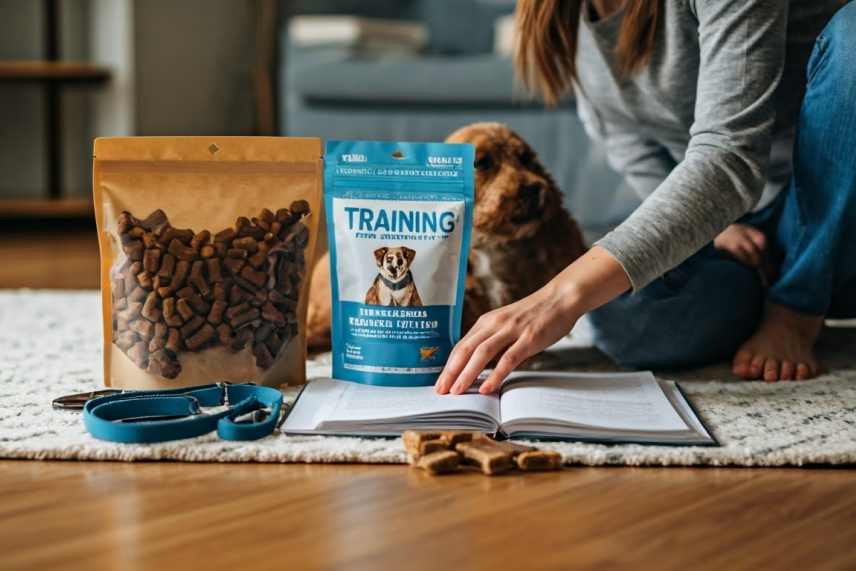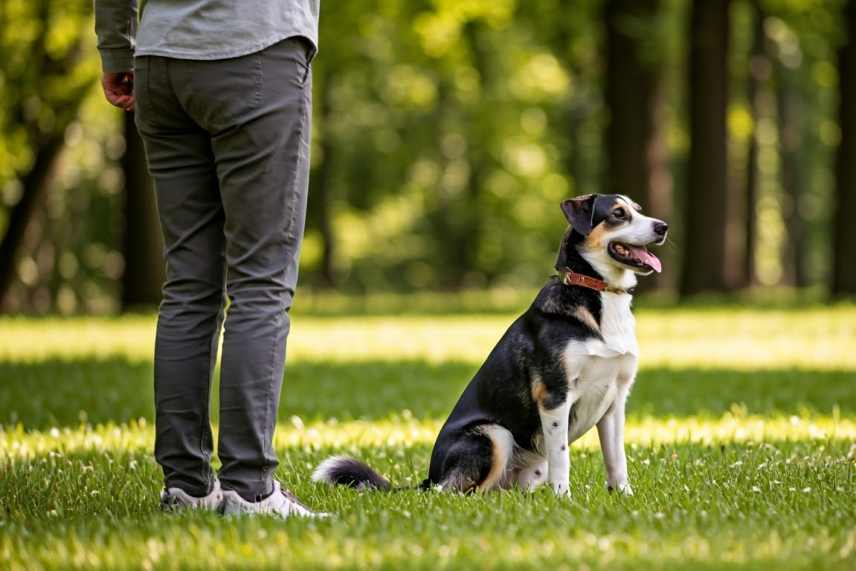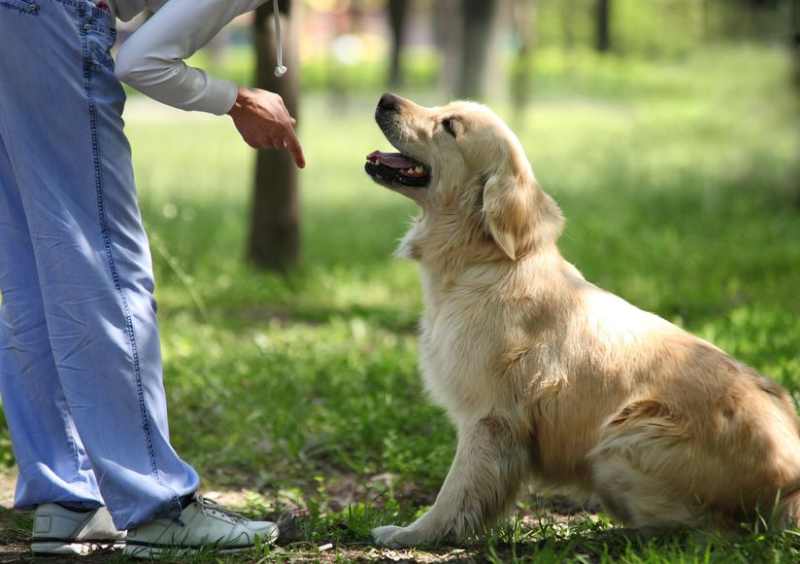
Key Highlights
- Learn to spot the signs of reactivity in your dog by watching their body language.
- Know the common things that can cause reactive behavior in dogs.
- Get ready emotionally for the challenges of training a reactive dog.
- Find out key tools and techniques, like positive reinforcement and clicker training, for effective training.
- Use a step-by-step guide to train your reactive dog, focusing on desensitization and counter-conditioning.
- Remember the importance of consistency, patience, and celebrating small wins during your training journey.
Introduction
Dog training for reactive dogs takes patience, hard work, and a good understanding of your furry friend. Reactive behavior can show up in many ways, including leash reactivity and aggression, which often come from fear or not enough socialization. It’s important to recognize that some reactive dogs can become aggressive dogs if not addressed properly.
As a good pet owner, the first step is to see the signs of reactivity and what causes it. In this guide, we will talk about the important tools and methods you need to help your dog on their training path. This will help them feel more confident and become better companions.
Are You Tired of Constantly Using Treats to Manage Your Reactive Dog?
👉 Register here for the FREE dog reactivity training webinar
Understanding Your Reactive Dog

Reactive dogs have strong reactions to different triggers. It’s important to notice signs of reactivity such as barking, lunging, or growling. Understanding your dog’s body language is very important. Signs of fear or stress need your attention. Reactivity may come from not being socialized enough, past experiences, or genetics.
Figuring out your dog’s triggers and emotions helps create a good training plan. You can manage reactivity by using consistent training methods such as positive reinforcement and avoiding situations where your dog might lunge. Learning to understand your dog’s behavior is the first step for effective training.
The Signs and Symptoms of Reactivity
Reactivity in dogs shows up in different ways. You might notice some common signs like barking too much, lunging on the leash, growling, and having tense body language. Understanding dog body language is vital, as dogs that are reactive can also look stressed. They might pant, pace, or avoid situations.
Knowing these signs is important for training. By spotting these early warning signs, dog owners can prevent reactive behavior from getting worse. This lets them use the right training methods quickly. Being aware of these cues helps dog owners support their pets in handling reactivity issues.
Common Triggers for Dog Reactivity
Exposure to new places, meeting other dogs, loud sounds, quick movements, or certain smells can make dogs act in reactive ways. Also, stressful events like going to the vet or groomer, not interacting with other dogs, and bad past experiences can add to this reactivity. Knowing these triggers is very important in making a good training plan.
This plan can help your reactive dog face these challenges and do well in different situations, such as when avoiding busy environments like the dog park. By spotting and dealing with these triggers, you can build a safe and caring space for your dog.
The Emotional Toll on Owners
Reactive dogs can be tough for owners. They can bring stress, frustration, and feelings of loneliness. Always having to watch a reactive dog carefully, especially at the sight of another dog, can make you feel very tired emotionally. Dealing with judgment from others or feeling like you are not doing well can hurt your self-esteem.
Also, since reactive behavior is unpredictable, it can cause anxiety. This makes everyday tasks harder. Owners should take care of themselves and look for help from supportive groups or experts. This can help with the emotional challenges of training a reactive dog.
Preparing for the Training Journey

Before you start training a reactive dog, you need to get some important items. A strong leash and tasty treats are essential. Set goals that are realistic based on what makes your dog react. It’s important to be patient and consistent during this process. Look for help from trusted places, like The Online Dog Trainer, for useful training methods.
Keep in mind that being mentally and emotionally ready is as important as having the right tools. This journey will be rewarding, but it can be tough. Both you and your dog will need to be dedicated.
Essential Tools and Resources for Training
To train your reactive dog well, you need some important tools and resources.
- A strong leash and harness help with leash reactivity.
- High-value treats can motivate your dog during training sessions.
- A clicker is useful for marking good behavior, while a crate provides a safe space for your dog.
For successful reactive dog training, it is important to stay consistent, use positive reinforcement, and have the right training tools.
Setting Realistic Goals for You and Your Dog
When you begin to train your reactive dog, it is important to set realistic goals to succeed. Keep in mind that it may take time to see changes in behavior. Start by deciding clear goals based on how reactive your dog is and what you can handle in training. Think about small steps, like reducing leash reactivity or improving your dog’s body language.
By taking on little challenges, you can stay motivated and easily measure your progress. Be patient and stick to your training plan. Focus on small improvements instead of expecting quick results. Remember, every little step forward is a win for you and your dog.
👉 Register here for the FREE dog reactivity training webinar
Step-by-Step Guide to Training Your Reactive Dog

Identifying your dog’s limits is the first step. Start by mastering basic obedience skills to build a good foundation. Introduce desensitization techniques slowly and carefully. Use positive counter-conditioning methods. Gradually expose your dog to triggers they may react to. Make sure to manage and support them regularly.
Step 1: Identifying Your Dog’s Thresholds
One important step in dog training for reactive dogs is to find out your dog’s thresholds. Knowing when your dog starts to react is key for good training. You can watch your dog’s body language and behavior to spot what triggers their reactions. These thresholds show the distance or level that makes your dog act reactively. By recognizing these thresholds, you can make a training plan that includes guidance from your handler. This plan can help slowly reduce your dog’s reactivity and change their behavior in a positive way.
Step 2: Mastering Basic Obedience Skills
- Start with basic commands like sit, stay, and come.
- Be consistent; practice in different places to help your dog learn.
- Use positive reinforcement, like treats or toys, to inspire and reward good behavior.
- Try to fit short training sessions into your daily routine to keep your dog engaged.
- Create a strong base before moving on to more advanced training methods.
- Show that you are a confident and patient leader.
- Remember, learning obedience is important for training a reactive dog.
- Stay patient and celebrate small wins as you go.
Step 3: Introduction to Desensitization Techniques
Desensitization techniques are very important for helping reactive dogs deal with their triggers. This method includes carefully exposing your dog to what makes them reactive while keeping a safe distance. You can slowly move closer and incorporate sniffing as your dog gets more comfortable. Repeating this while giving treats or playing helps your dog build positive feelings about the trigger.
Consistency and patience are essential in desensitization training. It is important to move at your dog’s pace to avoid confusion. Always talk to a professional trainer or behaviorist for advice that fits your dog’s needs.
Step 4: Applying Counter-Conditioning Strategies
Counter-conditioning is about changing how your reactive dog feels when they see something that frightens them. First, find out what sets off your dog’s attention and keep them safely away from it. When your dog spots the trigger, use treats or toys to help them link it with something good. Slowly move closer to the trigger while still rewarding your dog for staying calm. Being constant in this is very important. Always finish with a positive experience to help your dog feel good about the trigger. The goal is to help your dog look at their triggers in a safe way. It is important to be patient and consistent all the time.
Step 5: Progressive Exposure to Triggers
Gradually introducing your reactive dog to triggers is very important for their improvement. Start at a safe distance from the trigger. Make sure your dog stays calm. As time goes by, you can slowly reduce this distance if your dog feels more at ease. Always watch their body language for any signs of stress and make changes if needed.
This process, called systematic desensitization, helps your dog create positive connections with things they used to fear. Being consistent and patient is very important, as it can take a long time to help your dog succeed in reactive dog training. Celebrate small wins, and always finish training sessions on a good note. Keep in mind, slow and steady is the best way to succeed in reactive dog training.
Step 6: Ongoing Management and Support
- Consistency is important when managing your reactive dog.
- Keep a structured training plan that uses positive reinforcement techniques all the time.
- Use classical conditioning to encourage good behavior.
- Make training sessions short and fun to avoid overwhelming your dog.
- Watch their progress closely and change the plan if needed.
- If you need help, talk to a professional like a veterinary behaviorist.
- You can also take courses from trusted places like The Online Dog Trainer.
- Always remember that patience and persistence are key to helping your dog’s reactivity.
- Stay dedicated to ongoing management and support your furry friend.
Advanced Training Techniques

To help reactive dogs, we need some advanced training methods. Behavior Adjustment Training, or BAT, is one effective way. This method focuses on letting dogs make their own choices. By playing the “Engage-Disengage” game, you can help your dog learn self-control during tough times.
These techniques create a good base for changing reactive behavior. They focus on positive experiences and slowly getting your dog used to different situations. Using advanced methods like BAT helps us understand our dog’s behavior better. This understanding leads to more effective and caring training plans.
Behavior Adjustment Training (BAT) Explained
Behavior Adjustment Training (BAT) is a method used to change reactive behavior in dogs. It helps dogs learn to avoid things that make them reactive. In BAT, you create safe situations where your dog can act calmly when faced with these triggers, which may include the risk of a meltdown. By letting your dog leave without feeling pressured, it can lower anxiety and boost confidence. This approach helps dogs handle tough situations in a calm and controlled way.
Implementing the “Engage-Disengage” Game
Teaching your reactive dog the “engage-disengage” game can really help your training plan. This technique helps change your dog’s focus from triggers to you. It encourages positive behaviors. When you reward your dog for stopping to look at other things, you help them stay calm.
Start by practicing in easy settings before making things harder. This will help your dog learn to control themselves and grow in confidence. Being consistent is important for success. So, use this game a lot in your training sessions, especially in the next session. With patience and practice, you can lessen your dog’s reactivity and strengthen your bond.
Troubleshooting Common Challenges
Dealing with problems during training is common when you have a reactive dog. Setbacks can happen for many reasons. These may include your dog’s complicated reactions or outside factors that affect their behavior. It is important to be patient and stick to your training.
If problems keep happening or your dog’s behavior gets worse, it may be time to get help. Consider speaking with a veterinary behaviorist or a dog trainer who has experience with reactive dog training. Getting professional support can give you advice that is specific to your dog’s needs.
Dealing with Setbacks in Training
Training a reactive dog can be tough. You might face challenges that test your patience in your daily life with your dog. Problems like increased reactivity or changes in behavior are normal. Keep calm and stick to your training plan. You may need to change some strategies and that’s okay. Remember, facing setbacks is part of learning and doesn’t mean you’ve failed.
If you find trouble handling things on your own, consider getting help from a veterinary behaviorist. Focus on the small wins along the way. Stay dedicated to your goal of helping your dog deal with reactivity. Keep a positive attitude and keep pushing through difficulties.
When to Seek Professional Help
If your dog training for a reactive dog is not working well, you might want to get some help. Consider calling a professional if your dog’s behavior is dangerous to them or to others. You should also ask for help if their reactivity is getting worse, even after your repeated training. Experts, like veterinary behaviorists or trained dog trainers, can create a special training plan just for your dog’s needs. This can make your training safer and more effective. Remember, getting professional help is a good step for long-term success in handling your reactive dog’s behavior.
Celebrating Milestones and Successes

Recognizing and celebrating the small wins in your reactive dog’s training is very important. It’s good for you and your furry friend. Each victory counts. This can be a calm response from your dog when at a safe distance or better focus during training sessions. You should reward good behavior regularly. This helps build positive feelings and keeps your dog motivated.
Remember, progress takes time, but even the tiniest wins matter. They can really help with your dog’s training and strengthen your bond. Stay patient, stay consistent, and keep celebrating every step forward.
Recognizing and Rewarding Progress
Reactive dog training is all about noting small wins. Celebrate when your dog reacts better or stays calm. Positive reinforcement helps build trust and confidence. You can use treats, toys, or praise to encourage good behavior. Consistency is very important; rewarding good actions helps make them stronger. Seeing progress lifts the spirits for both you and your dog. In the tough process of training a reactive dog, every step towards a positive change is special.
The Importance of Consistency and Patience
Consistency and patience are key for successful dog training, especially with reactive dogs. A training plan that you follow regularly helps your dog feel stable and secure. It’s important to be patient, as it can take time to reduce reactive behavior. By reinforcing good behavior through consistency and patience, you will see lasting results. Keep in mind that every dog is different, and their progress may not be the same. Stay dedicated to the training, and this will help you build a trusting and cooperative bond with your reactive dog.
👉 Register here for the FREE dog reactivity training webinar
Conclusion: Dog Training for Reactive Dogs
In conclusion, dog training training for reactive dogs takes patience and a clear plan. You need to understand what triggers your dog and use positive reinforcement methods. This way, you can manage their reactivity better. It is important to celebrate small wins along the way.
Remember, setbacks are normal in training. Acknowledge the hard work you and your dog put in and the progress you both make. This is key for lasting success. Stay committed to your training journey. Seek professional help if needed, and always focus on your dog’s well-being.
Frequently Asked Questions
Can all reactive dogs be trained?
Most reactive dogs can be trained with dedication, patience, and the right help. It is important to understand their triggers. Setting realistic goals and sticking to training is key. However, some dogs may need professional support for specialized guidance.
How long does it take to train a reactive dog?
Training a reactive dog depends on things like the dog’s past and behavior. You may need several weeks to months, or even longer, to notice real changes. To get good results, it is important to be consistent with training. Patience and understanding also play a big role in your success.
What is the difference between aggression and reactivity?
Aggression is something that is done on purpose and usually without a reason. On the other hand, reactivity happens in response to a trigger. You can manage reactivity through training, but aggression might need help from a professional. It is important to understand this difference to handle your dog’s behavior better.
Are certain breeds more prone to reactivity?
Certain dog breeds, such as Border Collies and German Shepherds, may react more because of their genes and nature. Knowing the special traits of these breeds can help you choose better training methods for good results.
How can I find a professional trainer for my reactive dog?
- Search for local trainers who focus on reactive dogs.
- Look for trainers who use positive reinforcement methods.
- Check their experience in handling reactivity.
- Find out if they have certifications.
- Ask people for referrals or read online reviews.
- Meet the trainer in person to see if you fit well together.
- A good match can greatly help your dog’s training journey.
Building a Supportive Community
Discover how to build a helpful community for your reactive dog’s training journey. You will see the benefits of having a strong support network. This includes shared experiences and guidance from others.
Connecting with Other Owners of Reactive Dogs
Connect with other people who have reactive dogs. You can find support and guidance by joining online forums, going to local meet-ups, or signing up for group training classes. Sharing your experiences with others can help you learn and deal with similar challenges. Being part of a community offers helpful advice and emotional support.
Online Resources and Forums for Additional Support
Discover helpful online resources and friendly forums that can support you in training your reactive dog. Connect with people who share your interests, ask for expert advice, and find extra training tools to help you and your furry friend succeed.
The Role of Support Groups in Your Training Journey
Support groups are a great way to get help and encouragement during your training. You can share experiences, tips, and challenges with others who also train a reactive dog. Together, you can understand the difficulties and learn how to handle them better. Joining a community can make your training success more achievable.
How to Train a Dog That Is Not Food Motivated

Training a dog that isn’t motivated by treats can be challenging but not impossible. In How to Train a Dog That Is Not Food Motivated, you’ll discover alternative reward strategies to keep your dog engaged and eager to learn. This article explores various positive reinforcement techniques that go beyond food, helping you tailor your training approach to your dog’s unique preferences and personality.
Continue reading: How to Train a Dog That Is Not Food Motivated
Dog Training Tips | How to Successfully Train a Dog

Want to make your dog training sessions more effective and enjoyable? Dog Training Tips offers a collection of practical and easy-to-follow advice for training your pup using positive reinforcement techniques. Whether you’re dealing with basic commands or tricky behavior challenges, this article provides essential tips to help you create a strong, trusting bond with your furry companion.
Continue reading: Dog Training Tips | How to Successfully Train a Dog

